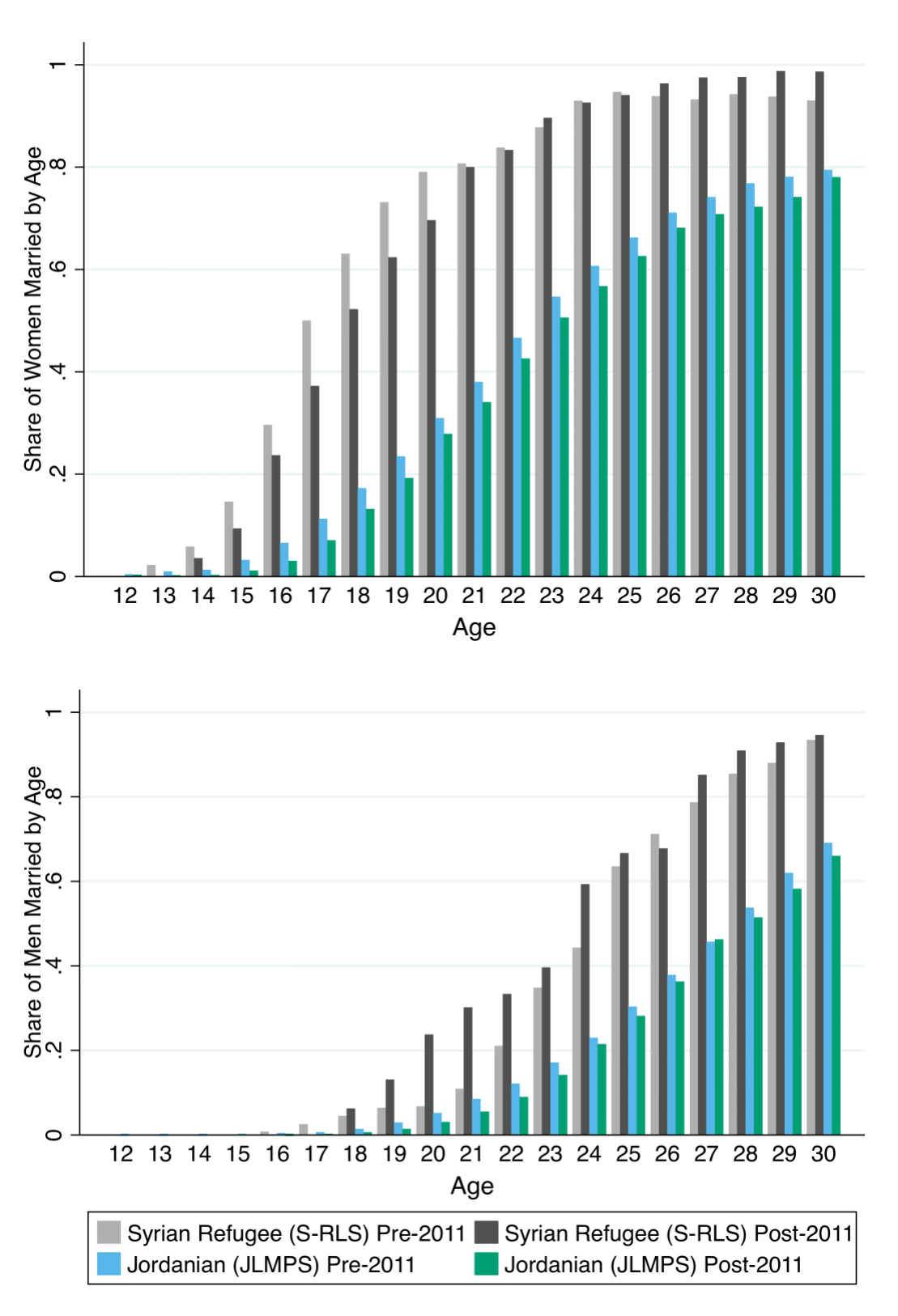[published paper], [data]
Summary
The Syrian Refugee Life Study (SRLS) represents one of the largest longitudinal studies of forcibly displaced persons globally. This paper introduces the survey design, sampling methodology, and initial findings from the first wave of data collection covering around 2,500 Syrian refugee households in Jordan.
Key Innovation: Developed a novel sampling framework and longitudinal tracking system for highly mobile refugee populations, achieving high retention rates across survey waves.
Research Question
How do refugees make decisions about work, education, health, and migration under conditions of legal uncertainty and economic precarity? What are the long-term trajectories of forced displacement?
Data Infrastructure & Survey Design
Scale and Scope:
- Sample Size: 2,500 refugee households, randomly selected from the universe of registered refugees
- Survey Waves: Multi-year panel study with multiple rounds of data collection
- Survey Modules: Labor markets, education, health, social networks, migration intentions, legal status, remittances
 Figure: Shift in marriage attitudes between Syrian refugees and Jordanians
Figure: Shift in marriage attitudes between Syrian refugees and Jordanians
Key Findings
- Employment Rate: only 21% of refugees had a job during the coronavirus pandemic.
- Mental health challenges: 45% of refugees exhibit symptons of depression.
- Return intensions: 40% express intention to stay in Jordan, even if the conflict in Syria ends
Policy Implications
- Labor Market Access: Work permit policies significantly affect employment and wages
- Healthcare: Financial assistance programs improve health-seeking behavior
- Long-term Integration: Legal status uncertainty affects investment in human capital
Data Access: The complete dataset, survey instruments, and documentation are available at the Harvard Dataverse.
This research gave me exposure to in large-scale data collection, panel survey design, and translating research findings into actionable policy recommendations.
